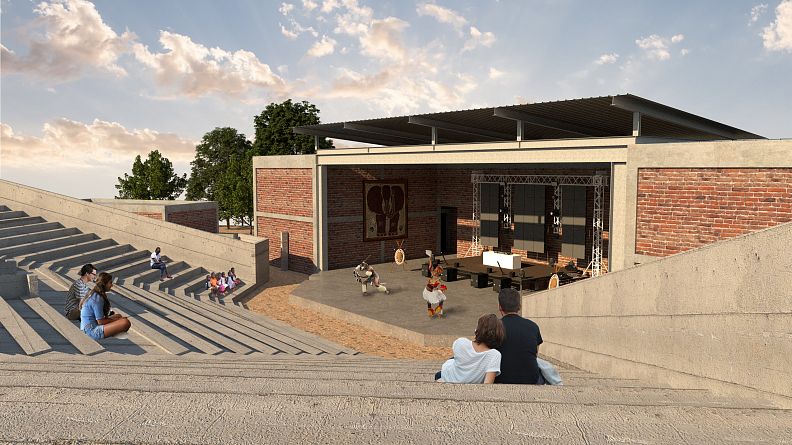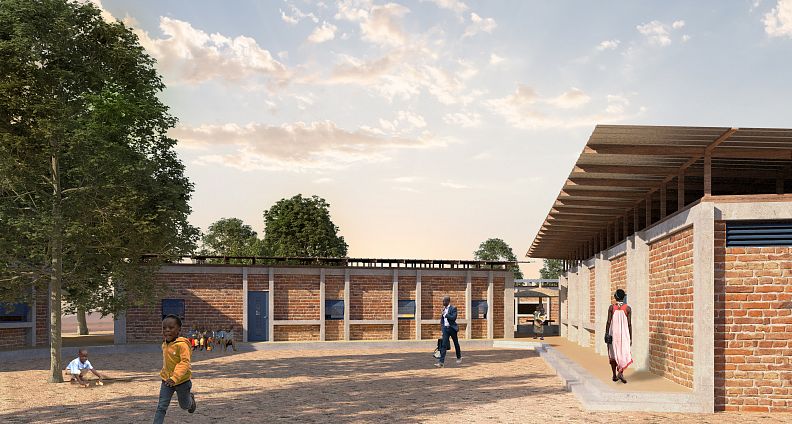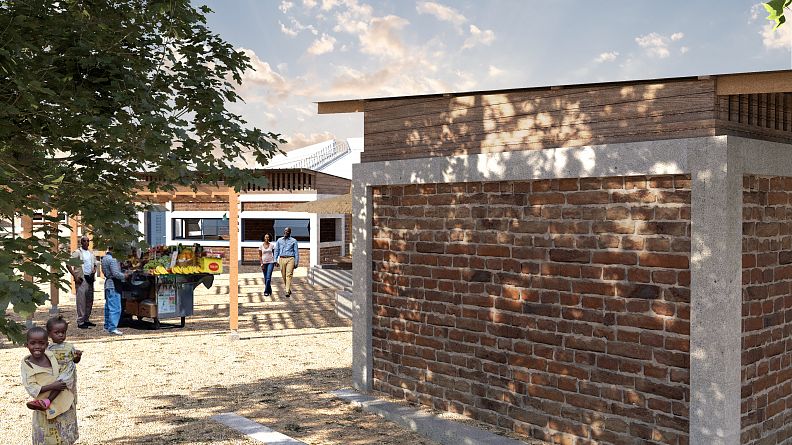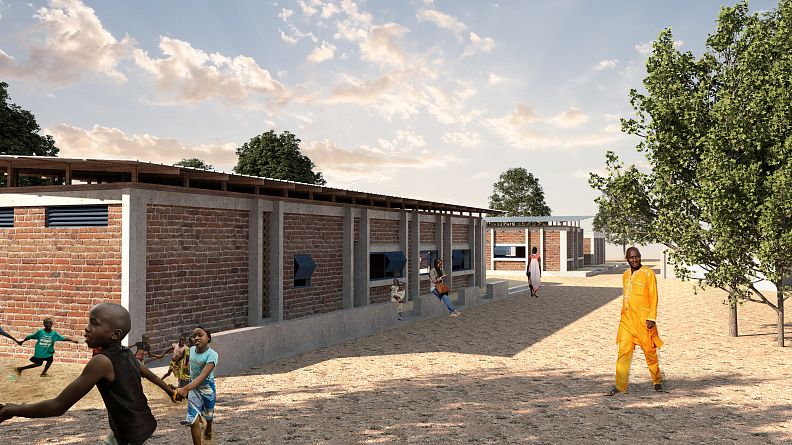The Urban Termitary for Engaged Arts

Project idea
The Urban Termitary for Engaged Arts rethinks La Termitiere in Ouagadougou as a center for culture and performative arts, and further integrates its position as an urban destination weaving vital activities into the site. The potential of the large deserted landscape is
leveraged to bring the city, and therefore the people, into the artistic center - and the artistic life to the people.
Project description
The Theatre Populaire is restructured into a comprehensive campus equipped with
convenient facilities for education, preparation, and building. In these interrelated strategies, the Urban Termitary revitalizes the landscape independent of its identity as a center for
choreographic arts but synergistic to it:
Activation of Urban Spaces
In addition to necessary provisions for artistic life, the city finds life with the creation of public and commercial spaces orchestrated with connective boulevards. This brings people closer to arts, and encourages them to learn and share experiences. Moreover these commercial spaces can be leased to local businesses such as retail or food services to serve artists, visitors, and audiences, while generating rent revenue to the CDC. These new activities ensure “eyes on the street” urbanist principles for safety.
Inclusion and Democratization of Arts
By weaving common urban activities into the CDC, people are put in proximity to the artistic realm. A central plaza serves as a core space for sculptures and temporary exhibitions to
celebrate art and civism that valorizes Ouagadougou, Burkina Faso, West African traditions, or Pan Africanist ideals. The main theatre’s open air seating is preserved to double its function as a civic space to encourage spontaneous performances from the public when there are no formal events.
Technical information
Sustainability and Identity
The proposed buildings (and new additions proposed through participatory decisions) use local earth bricks, and are built by the local community to empower a sense of ownership and belonging to the community. The locality of the materials are given additional sustainable value with designs that carefully consider the climate and use passive systems to reduce heat and maximize lighting.
Co-authors
Maximilien Chong Lee Shin, Toshan Ramsurn, Muhammad Taariq Husain Abdullatif, Muhammad Yoosoof Goolammamode









